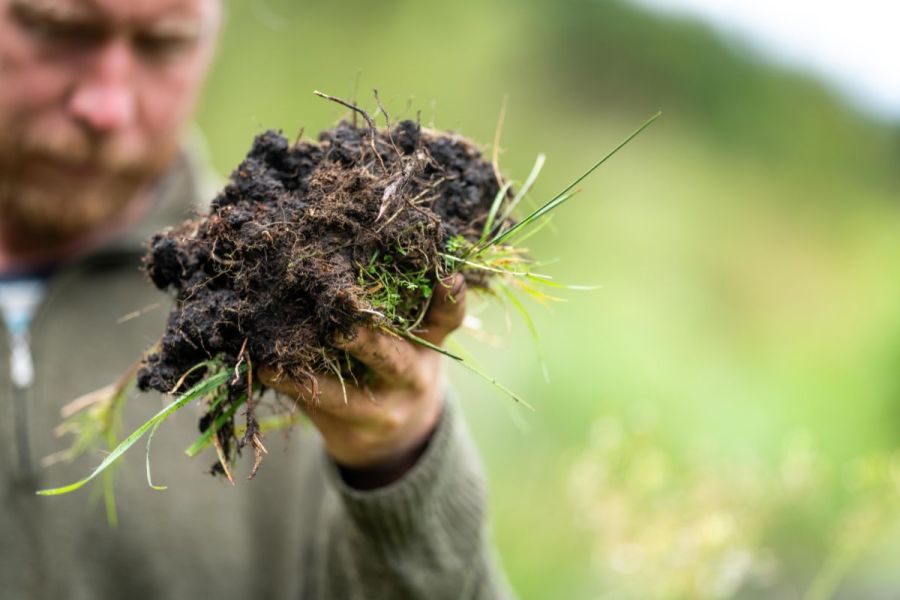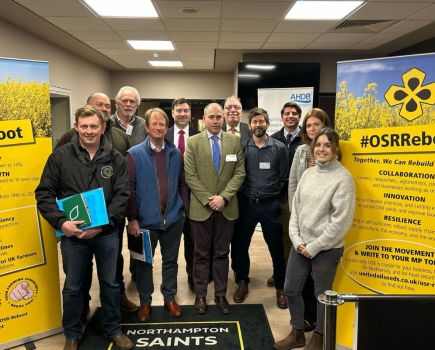Soils are the life support system of the crops farmers produce, but to unlock their potential they requires cover, roots, oxygen and porosity all working in unison. CPM digs into the matter.
“We spend hundreds of hours a year on machines and I wish we’d spend as much time soil profiling.”
By Melanie Jenkins
The emphasis placed on improving soil health has become integrated with many aspects of modern agriculture, but as Canadian agricultural engineer Odette Ménard pointed out at Groundswell in July, there’s so much more that can be done to achieve truly healthy soils.
Regen agriculture has appeared in many guises for Odette. “Around 30 years ago we were talking about soil conservation, then it became sustainable agriculture, followed by agro-ecology, eco-agronomy and now we call it regen agriculture. But for me, it’s always been soil health.”
Before the prevalence of agriculture, forests created an equilibrium in soils through the diversity of roots not just from the various types of plant, but the range in the size of their roots, she explains. “But with the introduction of farmed perennials and then annuals, it’s decreased the level of organic matter in the soil.
“We now focus on the organic matter in the top 15cm which is turning over every 5-10 years, but it’s the really high-quality organic matter in the soil below this that’s been depleting at a much slower rate and could take 100 years to cycle. So even though we’re moving towards healthier practices we could still be losing organic matter from this lower layer.”
Odette points out that a lot of effort goes into managing the top 15-20cm (6-8inches) of soil, which she calls the direct intervention zone. This is where we’re ploughing, discing, disturbing the soil, planting and harvesting. But all of this work we’re doing, despite our intentions to do good, causes collateral damage in the form of compaction, soil surface pulverisation and erosion.”
When it comes to assessing soil health, although it’s easy to visually analyse a field above ground and determine if what’s growing looks to be a good crop, she points out that when digging deeper, it can become apparent that the soil profile isn’t always allowing roots to grow to their full potential. “This is the very first step we should be taking and you should soil profile in good and bad parts of the field and when there are active roots in the system.
“The real soil potential is what’s happening up to 76-102cm (30-40inches) deep and we want there to still be root activity here. Something we don’t do enough is pull our shovels out to dig at least 90cm deep into the soil profile to find out what’s going on.
“And once you’ve dug into the ground you can determine horizons to work on based on colour, structure and root system. But it’s not just about the aesthetic of the soil, it’s also about the smell and whether this is bad or not. Another test is to run a knife through the soil to determine where there’s resistance and therefore compaction that will require actioning.”
Although more costly forms of management, such as subsoiling, drainage and levelling can be utilised to assist soil health, she flags that this still won’t reach the entire soil profile. This is where her ‘CROP concept’ comes into play. According to Odette, this consists of four main principles which have to work together for soils to thrive and be healthy: these are cover, roots, oxygen and porosity.
“We often look at these elements separately but they each have an impact on one another. Cover will lead to less crusting, better germination and more sun protection, which leads to more root growth. The root system impacts the cover itself and the porosity by supporting more microbial life, creating deeper explorations and further glomalin production. If there’s high porosity in the soil there’ll be a better root system because there’s more space and greater access to nutrients and water. And the better this system is, the less compaction there’s likely to be.
“No-till was meant to be the answer, but it didn’t work because we didn’t have porosity in the soil, so we have to work all of this together in order to have a truly healthy soil that won’t see yield losses. If one element is missing, we put a lot of energy into changing a system that still won’t work.”
Cover crops provide both a way of alleviating the issues caused by compaction and improving the root system and soil porosity, she says. “Although we can take all of these steps, we won’t be able to go back to the levels of organic matter found in the original forest systems. In addition to this, the climate is going to have an influence on replenishing organic matter.”
Odette flags that organic matter is built by residue but that only 8% of the carbon in residues will end up in soil organic matter in no-till systems. “But with cover crops and organic manures this is 12-23%, and from the root system, 45% of the carbon will become organic matter, so it’s important to get more roots into our systems to feed it.”
Before any steps are taken, Odette again stresses the importance of digging into the soil profile to find out what the issues are. “We spend hundreds of hours a year on machines and I wish we’d spend as much time soil profiling. If we’re soil profiling and we see a compacted layer at a certain depth, then it’s possible to determine that subsoiling should be done 10cm below this – if we subsoil above or too far below the area of compaction then we aren’t tackling the issue, but without soil profiling we wouldn’t know.”
However, subsoiling also has to be done when soil is at the right humidity at the depth that’s going to be worked, she says. “Ahead of subsoiling, you should plant cover crops a week to 10 days before to allow the roots to work into the cracks produced through subsoiling – and then don’t go back into your field for at least a month. But it’s important to note that subsoiling is like chemotherapy, in that it’s a practice you only ever want to have to do once – you don’t want it to have to be a repeat solution.”
This article was taken from the latest issue of CPM. Read the article in full here.
For more articles like this, subscribe here.
Sign up for Crop Production Magazine’s FREE e-newsletter here.




